The question of Magic vs Technology invariably arises if an honest appraisal of claims of magic and miracle are reviewed. The term magic usually calls to mind a manipulation of objects, people or events using supernatural means; as if the Laws of Nature are being broken or overpowered by the will of the practitioner.
Many things which have been labeled magic in antiquity are later discovered to be a form of technology. Dewey B Larson analyzed physics and science, noticing a great deal of conceptual errors, finally developing a complete and verified theory; Reciprocal Systems Theory. Larson’s model is so complete it extends into the metaphysical realm, and easily accounts for things normally referred to as magical. All of this was done using the same basic laws of nature and is conceptually in harmony with Hermetic Philosophy and Alchemy.
Fundamentals of Magic
All magical arts or practices are based on the principle of Mentalism – that the universe is a mental construct and as such, a human being can manipulate or co-create with it via their mind. While many magical books and how to manuals do not say this explicitly, all of the proffered spells, rituals and incantations affect the consciousness of the magician and the environment by design. This is can be thought of as a talismanic relationship. The magician performs rituals with items which affect consciousness, creating a geometry or configuration which allows the manifested result to come forth. The same concept is used everywhere on earth, but is thought of differently.
A process of manifestation involves a relationship which can be understood in a contractual framework. Anything which has been created, any object, event or being – is the product or result of a relationship between two or more beings; everything is alive, including objects. This is the essential premise which all forms of creation employ, including what the goal of magical practices are; to bring a focused intention into manifested form.
The formula, first in a magical terms, second in a business terms and finally in contractual terms:
Intention + Will + Ritual = Manifested Result
Goal + Human Resource + Business Plan = Completed Project
Intent to Create + Offer + Acceptance = Consideration
First we have an intention or goal – this must be imagined in the mind. In everyday life this is experienced as a desire, when combined with the will or caring, creating a plan of action; a method of manifestation. Then this is all combined and directed into action, a ritual. If one is hungry at work, the desire is imagined in the mind and expressed as an offer to their coworkers to get lunch at “XYZ” restaurant.
The role of MIND in all Magic
Within the normal concept of magic, the ability to manipulate objects and other people in ways which seem supernatural, the practitioner’s mind – their consciousness – is crucial for achieving the desired result; a working spell or ritual. This is because psy or metaphysical effects on matter are a direct result of mental image fractality or correspondence.
Remote Viewing, for example, is the ability to receive or create mental images of an actual place, with enough clarity, to verify the images against the place in question. The Stargate Program is one example of the validity of this process, and reveals the fundamental principle of correspondence at work.
The Remote Viewer holds a photograph of the location they wish to view. This photograph is an exact image of a certain point of view of the location, which the Remote Viewer reflects in their mind and holds via concentration techniques. The mental image in their mind, due to the photograph, corresponds with the real location, creating a cascade in the mental plane, allowing data to be transferred via entrainment. Entrainment is the ability of moving systems to share information via resonance; exactly like metronomes synchronizing.
This point clearly illustrates that mental creations, imagination and most importantly subjectification or meaning association, are the fundamental aspects of the magical arts. This is why a wand made by the magician who intends on using it, is more powerful than a fancy one made by another. The object is a Talisman, it is charged with meaning via the magician, which allows them to use this meaning structure in the mind (a mental image in it’s own right) to be invoked. As such, if the magician has not charged the object or the ritual with the correct meanings, the ritual or working will not be effective.
Magical Arts De-Mystified
When reviewing the staggering number of how to manuals or groups which teach magic, there are always things that must be done in the right way. Rarely are the reasons for why given. Much like cooking recipes, the plan of action is provided but no framework of understanding conveyed to the practitioner. Given the essential component of creating the correct meanings to objects and rituals, this is a major problem for many.
Although it may be possible to affect some degree of success without understanding the essential principles behind why wands, symbols and rituals are needed, it leaves the magician at a severe disadvantage. Magical workings employ what can be thought of as a ‘divine or absolute’ technology, the actual substance and make up of the universe itself is used to create a desired effect; hence the Alchemical overtones in nearly all forms of magic.
For Example, magical workings often need to be set against the 4 cardinal directions or done at specific times of day or points in the calendar. This is to allow for maximum entrainment of celestial influences on the working in question. Much like how the Earth, Sun and Planetary alignments increase the likelihood of earthquakes, these same celestial bodies affect consciousness and the magical working.
Magic in this sense is nothing more than an ancient technology which uses the inherent properties of the universe itself to manifest a desired result. No Laws of Nature are broken, no intervention from other intelligences takes place, which was not already present and operating.
The term magic is used mainly to refer to things we do not understand and ascribe supernatural qualities to as a result of our failure to comprehend. Therefore, Magic and Technology are actually two ends of the same scale (2 sides of the same coin), the key definer being our understanding. In other words, magic is what we call technology which we do not understand. A cell phone to an 18th century woman seems like magic, but to a child of the 21st century is just a piece of technology. And if we extend this premise to the whole of creation, with Source, Spirit or God as the inventor, then the whole of the universe is a piece of technology that is specifically designed to allow for higher orders of intelligence to use. As we master ourselves and life more, our ability to work with it increases.
In this respect, de-mystification or developing a complete body of understanding, not only empowers the practitioner, but accurately reflects the reality of what is taking place within their mind; moving from novice to master.
Honor and Dishonor – Black and White Magic
The goal or desire of the magician, and how they choose to manifest it, are what determine if it is black or white magic. Honorable practices are honest, fair and acknowledge most importantly free will choice. Dishonorable practices are dishonest, unfair and ignore the free will of others; the ends justify the means. The universe is organized to favor white magic or honorable practices, and as such if the goal and method are honorable, than the working is easier to bring about vs a dishonorable practice. Wizards employ white magic: truth, goodness and honesty. Sorcerers employ black magic: deceit, violence and illusion.
For example, if a ritual for romantic love attempts to force someone to fall in love with them, abrogating their free will, then it is black magic. The user manual for determining honorability is Natural Law.
The following article provides a testimonial of the principles described above with many clarifying insights which reflect the empowering affect of gaining knowledge of the mechanics of magic and ritual.
By Richard Smoley
Several years ago I decided to do an evening-long introduction to ritual magic at the New York Open Center, one of the city’s best-known gathering places for mind, body, and spirit activities. Soon before it was about to start I told myself, with some surprise, “My God! I’m about to do ritual magic with a bunch of people who have walked in off the streets of New York!”
Despite my apprehensions, the evening went off well. Power was raised, channelled in a certain direction, and then the ritual was closed. The only negative result was a comment I got back on a feedback sheet from a participant, who said she was shocked that I did not begin the ritual by invoking the holy archangels of the four directions (usually given as Michael, Gabriel, Raphael, and Uriel).
The person who complained was both right and wrong. In ritual magic, it is essential to create a sacred space to work in. But it is not essential to do this by invoking the four archangels specifically. In fact there are many ways to do it. Invoking the archangels is part of the Western tradition of high magic, particularly as handed down by the extremely influential Victorian occult society known as the Hermetic Order of the Golden Dawn. Here is another, quite different way to create a sacred space, from the Native American medicine man Rolling Thunder (known as “RT” to his friends), as described by one of his students:
We started a fire in the fire pit and formed a circle around it, warming ourselves in the chilly weather. RT pulled out a pouch of Five Brothers Tobacco, pure tobacco with no artificial ingredients. He passed the pouch around, each of us taking a little bit of tobacco in our hands. RT then led us in a prayer, starting out with Father Sun, Mother Earth, Grandmother Moon, and All Our Relations. He would include “the East where the Sun rises, to the South where the heat comes from, to the North where the cold comes from, and to the West where the sun sets.” RT would vary the order and the wording from time to time, just to maintain our attention.1
This is somewhat simpler than a lengthy invocation and visualisation of archangels. The version I used in the ritual in New York was simpler still; at the outset I simply asked the participants to visualise a pillar of light in each corner of the room.
This anecdote illustrates two basic concepts of ritual magic: (1) it is important to create a sacred space in which to work; and (2) there are many methods for accomplishing the same purpose. While many people associate the word “ritual” with something rigid and formalised, ritual magic, practiced at its best, is neither. Rather it’s a flexible system, with enough structure to give form to one’s intention, and with enough pliability to give the practitioner a great deal of leeway in actual practice.
In my brief description of the New York ritual, I mentioned another important part about ritual magic – raising power. No one knows what power is (used in this sense), and at the same time everyone knows what it is. We cannot say whether it is a form of electromagnetic energy, the life force known as chi, or something quite different from either of these. But all of us have experienced its effects, and, moreover, all of us have raised it ourselves, usually without knowing what we are doing.
Remember the last time you entered a room in which an argument was about to break out. Although probably nothing was different about the air or the lighting or any of the physical aspects of the room, you undoubtedly noticed a feeling of tension and perhaps danger in the atmosphere. This tension becomes even more palpable if the room is silent, and the pressure that you feel to dispel it becomes extremely intense. One way of dispelling it is to express it somehow, and if the tension is not too strong, it can be broken when someone simply speaks. At other times, it erupts in an argument or even a physical fight.
Another example is the classic situation of the teenage dance. At the outset the boys are ranged at one end of the hall, the girls at the other. Everybody is too shy to begin dancing, and again an extreme amount of tension accumulates in the room. Finally one courageous couple breaks the tension and begins to dance. The energy starts to flow. It is expressed through dancing (and perhaps later on, sexually).
Most of the time this raising of power is completely unintentional and undesired. Its presence causes a great deal of discomfort, and depending upon an individual’s personality type, he may try to get rid of it by giving in, arguing, or simply leaving. The magician, by contrast, wants to raise this power. But he (or she) chooses to do it only in certain circumstances and for specific results.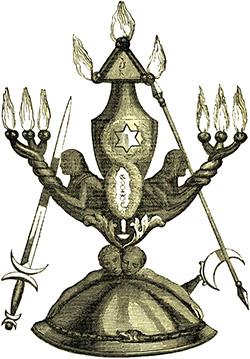
I’ve said that the magician raises power for specific intention, and in this context it’s important to note that power in this sense, like the Force in the Star Wars films, is morally neutral. It can be used for good or evil or for that matter mixed ends. Using it for good purposes – such as healing or blessing or cleansing – is known as white magic. Using it for harmful purposes, such as cursing or coercion, is black magic. These terms are well-known; a less familiar one is grey magic, which is done for mixed motives. In all likelihood few magicians probably practice grey magic intentionally, although most have probably done so without entirely realising it. I personally would characterise doing a magical ritual to find a lover as grey magic; doing a ritual to make a specific person fall in love with you would be closer to black magic, since it intentionally interferes with the free will of another person.
All these reflections lead to some questions: Does ritual magic work? If so, how? And since practicing magic for selfish ends is at best morally ambiguous, why do it at all?
To look at how magic works, it’s helpful to understand a concept that has fallen into disuse in recent years but still occupies a central place in Western magic: theastral light. Esoteric texts from the Renaissance and early modern era often refer to it as theanima mundi, or “the soul of the world.”
“God is light,” the Bible tells us (1 John 1:5). Esotericism regards this image as a specific and accurate picture of reality. This light pervades the universe; there is nowhere and nothing it is not, but it is modified, its purity and intensity are filtered and diluted, as it proceeds through various levels of manifestation. Esoteric theory holds that this light reaches us on earth only after passing through the zones of the stars and planets, whose influences it absorbs; hence its name.
Astral light must not be confused with physical starlight. It is a subtle matter, imperceptible to the five senses and to the implements of science. “It is the common mirror of all thoughts and forms,” writes the nineteenth-century French magus Éliphas Lévi, “the images of all that has been are preserved therein and sketches of things to come, for which reason it is the instrument of thaumaturgy and divination.”2
To form a more or less accurate picture of this light, one need only ask, what is the substance of a thought? Neurochemical responses, a scientist may say. While that may be true up to a point, we don’t experience these images as neurochemical events; we experience them subjectively as images and forms. In this latter form, they can be said to be made up of astral light.
A more topical analogy comes from the world of computers. Hardware, software, and networks together form cyberspace, a dimension that, while in no way separate from the workings of computers, seems to obey its own laws and possess its own reality. This resemblance between the apparently outmoded world of the occult and the sophisticated ideas of cutting-edge science has not gone unnoticed: Silicon Valley is a hotbed of interest in the esoteric, and computer aficionados sometimes speak of cyberspace as a kind of bardo – a term used in The Tibetan Book of the Dead to designate the astral plane.
The fine matter of the astral light is also believed to form the subtle or “astral body” of humans, giving literal force to the words of Shakespeare’s Prospero: we are indeed “such stuff as dreams are made on.” Shakespeare probably meant these words metaphorically; he was saying that we are frail, transitory, ephemeral. But then so are dreams and mental images.
This is not to say that the astral light is itself a frail substance; occultists consider it indestructible. But this subtle matter does not hold shapes well. Dream figures constantly shift form, and even before our waking eyes mental images rise and fall like waves. For this reason some esoteric teachings figuratively refer to this substance as “water.” Under most circumstances, practically none of the thoughts or images formed in this “water” ever come into physical manifestation; there is not enough force behind them to make that happen. Hence, the central aspects of occult magic has to do with forming, holding, and energising a shape composed of astral light. If enough power and skill are used in its creation, the image will sooner or later manifest in the physical world.
In theory the process sounds simple enough, and in a way it is, but it is not so easy to accomplish. To begin with, in order to manifest in the physical world, an image must have a steady, consistent form in the mind’s eye. In practice, however, few things are more difficult to achieve, since it is notoriously hard to hold an image in one’s mind for all but the briefest time. This may be partly due to a lack of mental discipline, but it also reflects the nature of the astral light itself. It is fluid and slippery; trying to hold it is like trying to grab water with one’s bare hands. Much of magical practice consists of moulding this elusive substance. Hence magical training emphasises, above all else, mental concentration and will.
Look at some object near you. Now close your eyes and try to visualise it. Then open your eyes again, and compare your mental picture of the object with the object itself.
If you’re like most people, you’ll find some discrepancy between the object and your picture of it. You may find that you were able to imagine some parts of it better than others, or that you could imagine it as seen from one angle but not from another. You’ll probably find not only that it’s hard to keep your mind on the same picture, but that it’s difficult to create an entirely accurate image even of an everyday object right in front of you.
One part of magical training is intended to hone the skill of visualisation. The magician may begin by taking extremely simple objects or forms – geometric shapes, for example, like triangles and circles – and attempting to visualise them. Later on, the aspirant may be able to proceed to more complicated things like three-dimensional objects. A piece of fruit, an orange, for example, is a good thing to use, since one can imagine not only its appearance, but also its taste, smell, and texture.
Visualisation and imagination form only one aspect of the discipline. The second and equally important part is the conditioning of the will. The mind is not likely to enjoy concentrated imagination at first; it will probably rebel and drift on to its ordinary worries and fantasies. The only way to train it is to constantly bring it back to the object.
Such work is often tedious, and the beginner may be able to practice for only a few minutes a day before concentration gives out. Gradually, however, these practices will achieve their end. The act of constantly bringing the mind back to the object, despite boredom or frustration, begins to form a small core around which the will can constellate. And the will is the magician’s principal tool.
So far this procedure resembles the “creative visualisation” described in many books. Creative visualisation, however, generally doesn’t go past this point. Nothing more may be needed: sometimes the greatest hurdle lies in simply formulating a clear goal. But often the enterprise requires some sacrifice: an additional investment of vital energy to literally give life to the desired image.
This brings us back to the need to raise power. For a process of ritual magic to be complete, it must have a clear and specific form in the mind of the practitioner – and enough power must be directed toward it to ensure it manifests.
This does not always happen. To cite another personal experience, about fifteen years ago I was on a retreat with a group holed up in a country house in Derbyshire, England, learning to practice magical techniques. One of the chief things taught was raising power, which was done by having the group (of about a dozen people) channel mental energy in a certain direction. Throughout most of the retreat this power was directed to an actual sink – a drain in the floor of one of the utility rooms. The reason for doing this was quite clear. We were learning to raise power, but this power could not be allowed to float around in the atmosphere. It would create enormous tension (and there was tension enough anyway); given enough momentum, it would start to cause mayhem. So for training purposes the power was directed to the ground – it was literally “earthed.”
Such was the practice for most of the retreat, but toward the end each of us was allowed to raise power and direct it toward whatever we wished. We all took turns: we sat in a room on our own while the other members of the group directed power toward us. When it came to be my turn, I decided to channel this power toward realising a particular project I had in mind at the time.
But it was no good. I could not focus the power in the direction I wanted; it felt as if it kept slipping and sliding away from me. I tried to recoup my efforts more than once, but soon the time was up. The whole experience had the depressing quality of a premature ejaculation.
Where did the failure lie? I certainly felt power being sent in my direction; that was not the problem. And the project I was developing was clear enough in purpose and intent. Rather the failure came from my own will. Although I did my best to work with the power through the exercise, there was some level at which I was not interested enough in this project to make it manifest.
It was, as a matter of fact, a book project, and it came as no surprise to me a few weeks later when I learned that all the publishers to whom my agent had submitted the project rejected it. None of this was especially tragic; all writers have projects that they come up with and never manage to materialise; in fact, these generally far outnumber the successful ones. But the whole experience taught me something about the nature of will.
Will, as I’ve said, is a chief characteristic of the ritual magician, and from my experience, I would say that the will is in many ways as subtle and elusive as the astral light itself. Where exactly ismy will? In my superficial wishes and desires? In my gut? In the deep and inaccessible reaches of my heart? I would say that for the will to be truly effective, it must lie in, and encompass, all these parts of one’s being; if one is conflicted or ambivalent, the results will be nil.
All this helps to answer a question that was posed earlier: Does ritual magic work? It does work, but it is a subtle and difficult process that requires a great deal of training and mastery – and especially self-knowledge – in order to succeed.

Is ritual necessary in order to make one’s will manifest? After all, if it’s simply a matter of raising power and focusing it on an image, what need is there for a ritual at all? Can’t it be done by thought power alone?
In fact, it can; and that is the theory behind creative visualisation and what some portions of the New Age world call “manifesting.” In these techniques it’s enough to work exclusively through thought power – if the will is strong enough. These practices differ from prayer in that they don’t necessarily invoke the favour of God or a god in order to operate; rather it is a matter of simply using certain universal (though little-known) occult laws. They differ from ritual magic in that no physical operation is necessary.
Given all this, the reason for practicing ritual magic is twofold: in the first place, ritual magicians are drawn to this kind of activity. For them the more inward and sedentary acts of prayer and meditation may seem a little bloodless. There is a certain satisfaction to be gained from making and wielding magical implements in a way that’s perhaps not very different from the reasons people sometimes prefer to build their own bookcases or brew their own beer. This may seem fairly obvious, but it is not trivial. There is a part of the mind that will not take anything seriously that it cannot see or touch, and ritual magic is meant to address – and involve – this part of the mind.
The second reason is both grander and more abstract. Man, it is said, is a bridge between worlds. He is the only creature that we know of who is capable both of extending his mind to sublime and mystical levels of experience and of doing and acting in physical reality. Some esoteric teachings would go so far as to say that this is our function as human beings, and that many of our sufferings and discontents occur because we have forgotten it. In light of this idea, we can see how ritual magic can be valuable and effective in its own right, quite apart from whatever apparent results it might achieve. It enables the magician to serve as a conduit between the higher and lower worlds, and to assist in the work of unifying them.
There is a great deal about ritual magic that I haven’t been able to discuss in an article of this length – divination, for example, which in its many forms attempts to take a kind of reading of the patterns in the astral light in order to find out what is likely to happen in the physical world. (The Tarot and the I Ching are two common methods used by magicians today to do this.) Nor have I been able to explore the issue of raising and interacting with spirits – invisible entities that, under the right circumstances, can communicate with us and can also have an effect in the physical world. These are large and important subjects in their own right, and serve to indicate that ritual magic, practiced in the West for centuries, retains its fascination and its power.
.
RICHARD SMOLEY has over thirty-five years of experience of studying and practicing esoteric spirituality. He is the author of Inner Christianity: A Guide to the Esoteric Tradition; The Dice Game of Shiva: How Consciousness Creates the Universe; Conscious Love: Insights from Mystical Christianity; The Essential Nostradamus; and Forbidden Faith: The Secret History of Gnosticism. This article is adapted in part from his Hidden Wisdom: A Guide to the Western Inner Traditions (coauthored with Jay Kinney). Smoley is also the former editor of Gnosis: A Journal of the Western Inner Traditions. Currently he is editor of Quest: Journal of the Theosophical Society in America and of Quest Books. His recent book is Supernatural: Writings on an Unknown History, which contains many articles that originally appeared in New Dawn.
Source:
http://nexusilluminati.blogspot.com/2015/02/ritual-magic-in-theory-and-practice.html

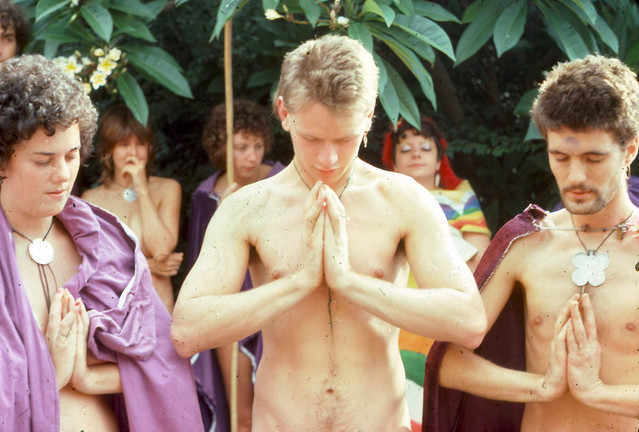
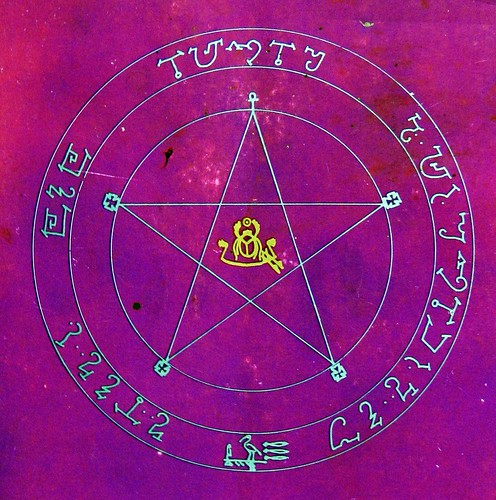
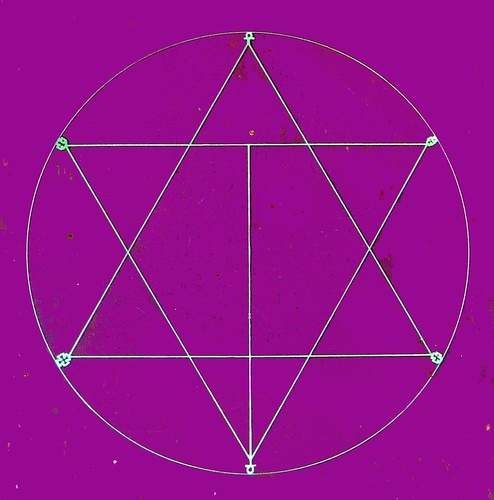
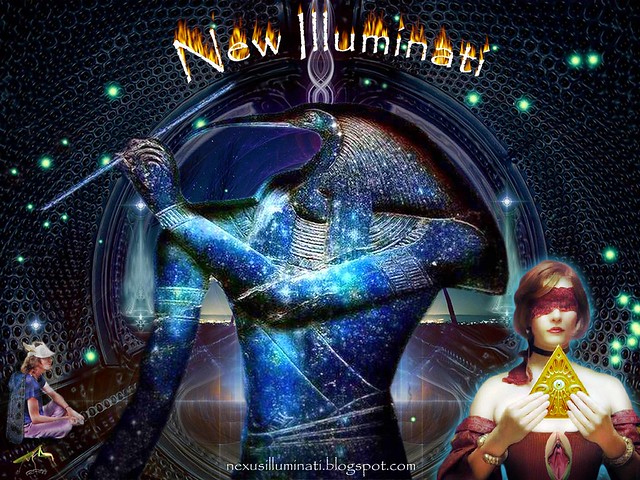
Leave a Reply